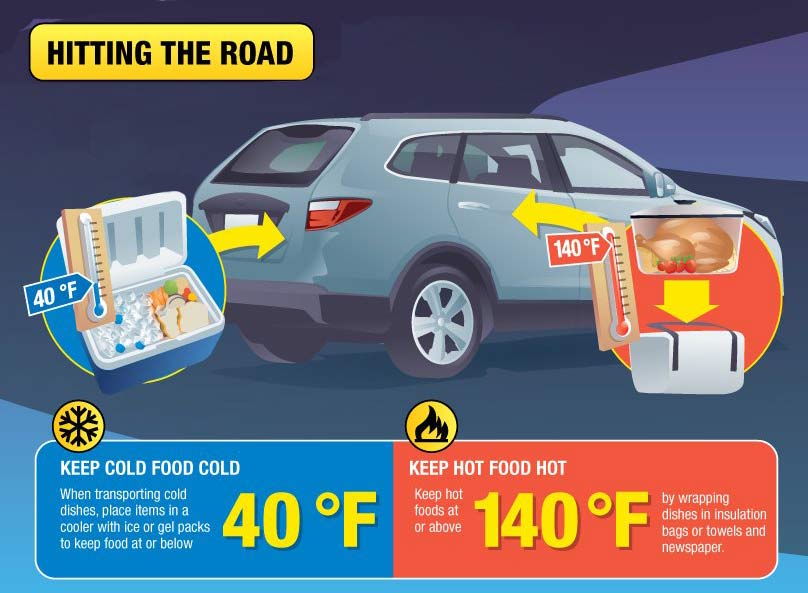Making tailgate party plans for the big game? Good friends – great food – sounds like an awesome time right? Because tailgate parties are all-day food fests and grilling extravaganzas, they’re also a increased risk of food illness.
Along with the stadium rules, make sure to follow food safety principles and procedures – so you and your friends can enjoy the game rather than getting a foodborne illness.
About Tailgating
A tailgate party is a social event held on and around the open tailgate of a vehicle. Tailgating, which primarily takes place in the United States, often involves consuming alcoholic beverages and grilling food. Tailgate parties occur in the parking lots at stadiums and arenas, before and occasionally after games and concerts. People attending such a party are said to be ‘tailgating’.
Prepare in Advance
Plan your day in advance to ensure you have enough tailgating time. You want to arrive early to get a good spot. Coordinate with your fellow tailgaters, so everyone shows up at the same time to get spots together. Keep in mind setting up takes time. You also need time to clean up all your tailgating items and make it into the gates and to your seat before kickoff.
- Divide cooked food into shallow containers and store in a refrigerator or freezer.
- Be sure to keep raw meat and poultry wrapped separately from cooked foods, or foods meant to be eaten raw such as fruits.
- Rinse all fresh produce under running tap water before packing it in a cooler, including produce with peel-away skins or rinds.
- Keep cold foods cold to prevent food poisoning. Place cold food in coolers with frozen gel packs or ice. Keeping it at 40°F or below prevents bacterial growth. Meat and poultry may be packed while it is still frozen; in that way it stays colder longer.
- Multiple coolers: Consider packing beverages in one cooler and perishable foods in another since you are likely to grab beverages most often.
- Learn about foodborne pathogens, cross contamination, cold and hot food safety, and best practices to prevent foodborne illness.
- Food Manager ANSI Certification: $99.00 - Valid in all States
- Food Handler Training: Only $7.00!
- 10% OFF: Enter Promo Code "train10off" at Checkout
At the Event: Keep it Clean and Safe
- Hand Sanitizer — You may not have access to real bathrooms near your tailgating site. Pack hand sanitizer for quick hand cleaning. Hand wipes also work. If you want water, clean out an empty laundry soap bottle with a dispenser. Fill it with water. Press the button to get your hands wet.
- Create a Wash Station: Fill an empty detergent container with sudsy water. Use with paper towels.
- Create a Trash Area: Use a few collapsible laundry hampers lines with heavy duty garbage bags to sort and dispose of trash.
- Find Disposal Area: Scout out where the nearest garbage and recycling areas are. There are very specific rules for disposal. A lot of tailgate friendly stadiums have maps and guides to look at ahead of time.
- First-aid kit — Hopefully you won’t need to use it, but it’s a good idea to pack a first-aid kit for scrapes, splinters and other minor injuries.
 Image Source: Shutterstock
Image Source: Shutterstock Cleaning Tips
- Line your grill with foil
- Always have extra Tupperware or paper plates to store or giveaway leftovers
- Have an extra allotment of water and wet naps for cleanup
- Recycle and collect trash as you go
- Bring collapsible laundry bags or hampers to line with garbage bags
- Give away reusable team cups for less mess
- Be prepared for slush, rain, or other messy weather
- Have Disposable or washable table cloths
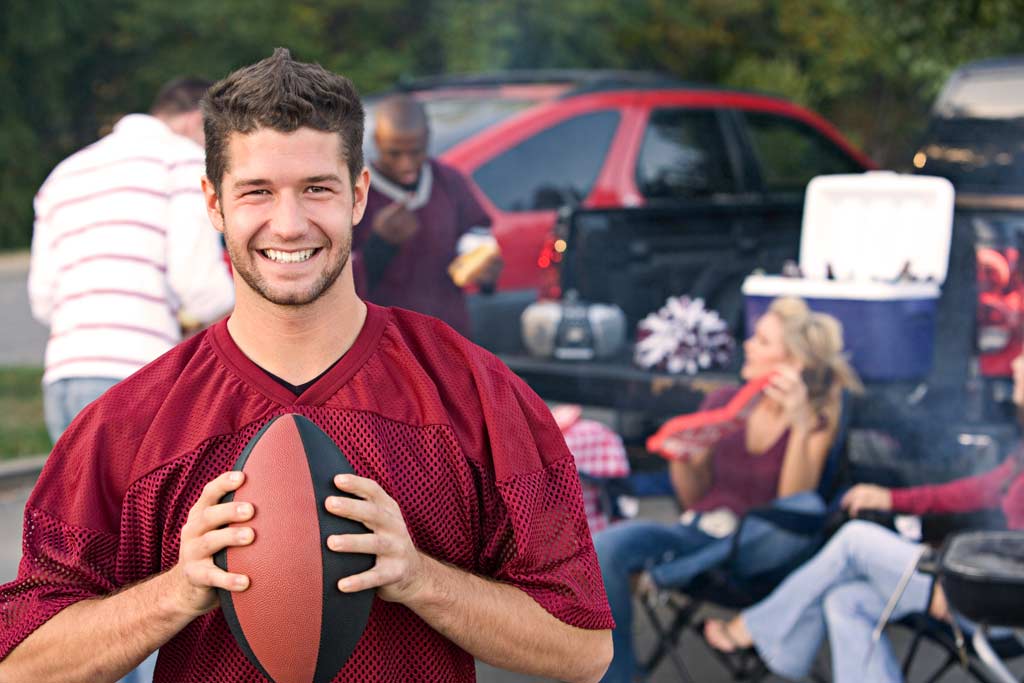 Image Source: Shutterstock
Image Source: Shutterstock Avoid Cross Contamination
- Separate raw meats from ready-to-eat foods like veggies when preparing, serving, or storing foods.
- Offer guests serving utensils and small plates to discourage them from eating directly from the bowls with dips and salsa.
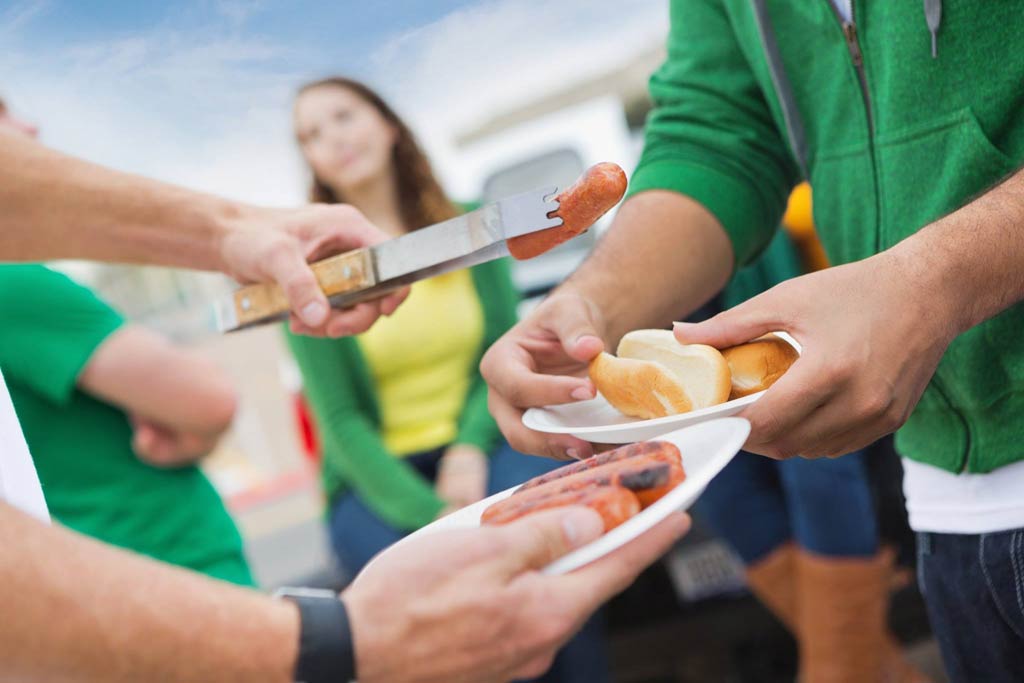 Image Source: Shutterstock
Image Source: Shutterstock Cook to Safe Temperatures
- Use a food thermometer to the minimum cooked temperature of meat, like chicken wings and ground beef sliders, and any other meat on your menu.
 Image Source: Shutterstock
Image Source: Shutterstock - Cook to the Safe Minimum Cooking Temperatures recommended by the USDA:
Category Food Temperature (°F) Rest Time Ground Meat & Meat Mixtures Beef, Pork, Veal, Lamb 160 None Turkey, Chicken 165 None Fresh Beef, Veal, Lamb Steaks, roasts, chops 145 3 minutes Poultry Chicken & Turkey, whole 165 None Poultry breasts, roasts 165 None Poultry thighs, legs, wings 165 None Duck & Goose 165 None Stuffing (cooked alone or in bird) 165 None Pork and Ham Fresh pork 145 3 minutes Fresh ham (raw) 145 3 minutes Precooked ham (to reheat) 140 None Eggs & Egg Dishes Eggs Cook until yolks and
white are firmNone Egg dishes 160 None Leftovers & Casseroles Leftovers 165 None Casseroles 165 None Seafood Fin Fish 145 or cook until flesh is opaque and separates easily with a fork. None Shrimp, lobster, and crabs Cook until flesh is pearly and opaque. None Clams, oysters, and mussels Cook until shells open during cooking. None Scallops Cook until flesh is milky white or opaque and firm. None
Watch the Time
Track the time that food stays on the buffet. Throw away any perishable foods that have been out at room temperature for two hours or more.
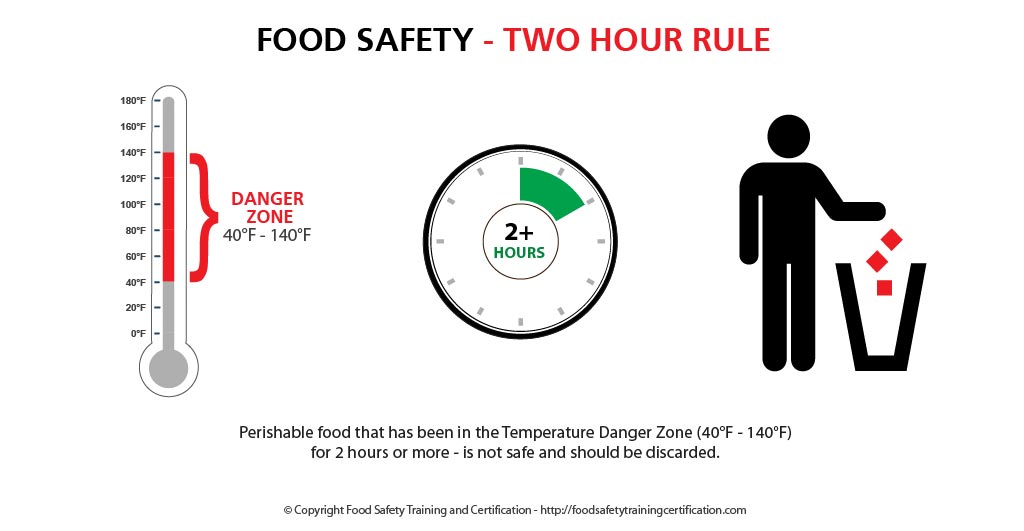 Image Source: Shutterstock
Image Source: Shutterstock Tailgate Grilling Winning Tips
- Consider more than one grill, fryer, or smoker
- Get a portable grill that will store safely with the vehicle
- Bring a metal bucket if you’re working with coals
- Line your grill with aluminum foil for easy cleanup
- Have dedicated to-go utensils kept with your portable grill
- Have extra fuel
- Dedicate a side table for your tailgating grill so you have plenty of room to prep, cook, and serve
- Fire extinguisher: It’s a really good idea to have a fire extinguisher on hand.
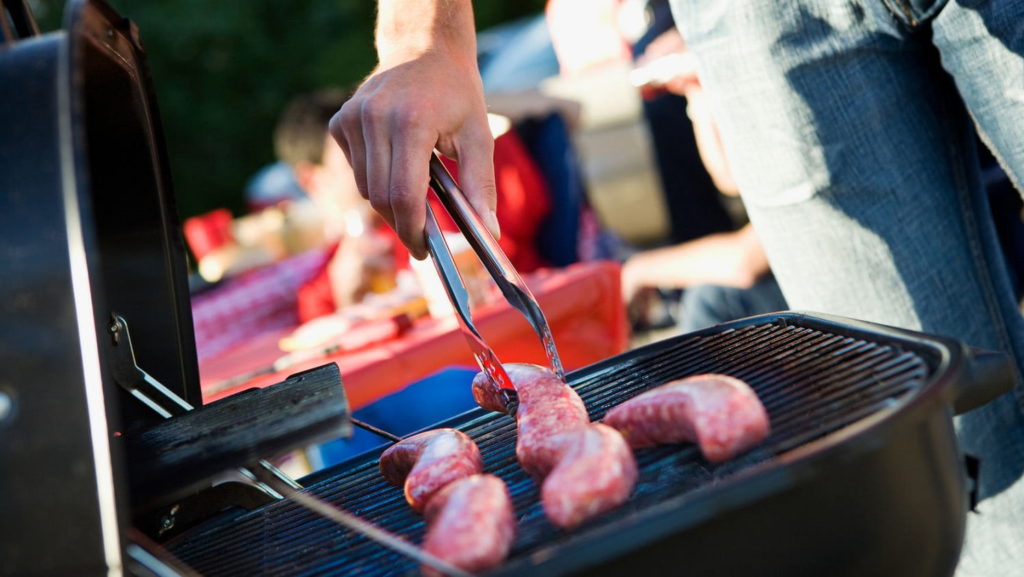 Image Source: Shutterstock
Image Source: Shutterstock Tailgate Stadium Rules
Tailgating parties require more prep than food preparation. Make sure you know the tailgating rules, codes of conduct and best practices before tailgating.
Each stadium has a rulebook on its website that lays out the tailgating rules and fan codes of conduct. Some are specific to the stadium while others are rules of conduct that are leaguewide. These apply inside the stadium and in the parking lot.
Tailgate Lot Division
Different parking lot areas can be broken up into different zones, which each have specific tailgate rules. Plan ahead and follow the stadium playbook to land a good spot.
Some arenas and stadiums do not allow tailgating, like the Honda Center in Anaheim, California. You can still grill for the game, but plan on doing so at a nearby home. Evening games are great for this.
End of Tailgate Party Cleanup
Most stadiums have schedules for when parties can start and when they must end. Keep that in mind when you’re dealing with hot grill coals, considering cleanup, and getting lost in the good times.
Clean up the area fully. Not only is it the responsible thing to do, but it also prevents tire damage as people leave the parking lot.
Other than a bit of spilled beer, your spot should show no signs of your presence. Don’t dump charcoal and drive away, and never leave trash on the ground.
Show respect for not only the environment but also your home team and the many employees who support their efforts by keeping the grounds clean.
Remember, tailgating is all about having a great time with the people you invite. Always keep it safe and enjoy the fun.


